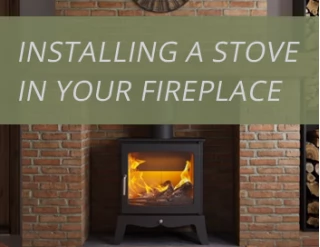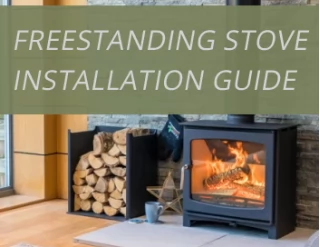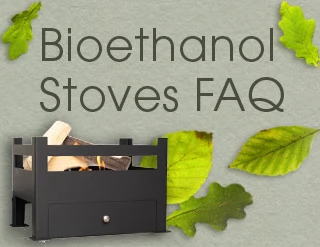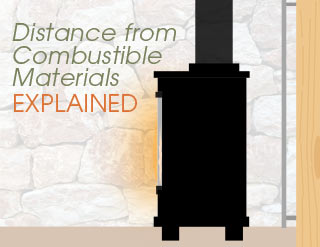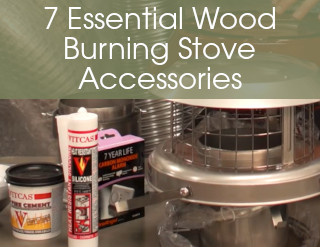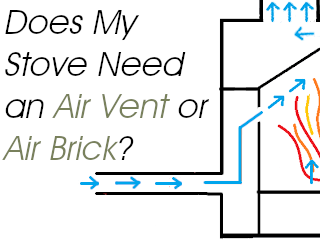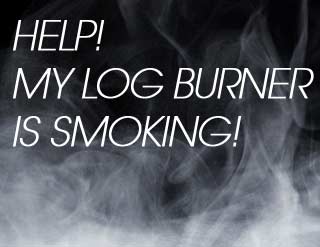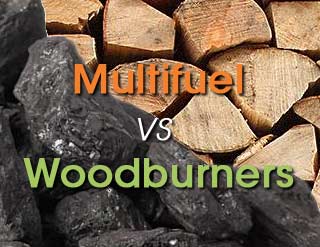Why is my wood burning stove spilling smoke into the room?

Smoke leaking from a log burner into a room is a common yet frustrating issue and one that could be caused by several different factors.
Stove features that can cause log burner smoking:
Baffle Position
The first thing that we recommend checking is that your baffle is in correctly. The baffle plate reflects heat back into the firebox so that it burns with the maximum efficiency. If you can confirm your baffle is in the correct position you can almost always rule out the stove being at fault. Now, there are can be a couple of features on stoves that can make a smoking stove worse.
Restrictive Baffle
A restrictive baffle - To boost efficiency, some modern stoves have very tight baffle designs that work well in test conditions but perform badly when attached to an already poorly performing chimney. If you look inside your stove and can barely see how the smoke escapes, you most likely have a stove with a restrictive baffle design.
Large Single Door
If you have a large single door on your stove, opening this quickly can pull the smoke out of the stove into the room. You need to crack the door open, wait for the pressure between the stove and room to equal each other out and then slowly swing the door open. You will find issues with smoking stoves are always more common on larger, single-doored stoves because of the pressure difference and the simple fact that a greater volume of smoke is trying to escape up the chimney. If you are looking for a new stove and know you have a poor performing chimney, look for a stove with a smaller door and KW rating. For example in our range the Hampton 5 performs very well on a wide range of chimneys.
How Your Chimney Can Force Wood Burning Stove Smoke into the Room
So, let’s now tackle the most common cause of a stove puffing out smoke…. the chimney itself. Before we tackle the issue, a brief explanation of how a stove works and why smoke is often coming out.
For a stove to work, your chimney needs to be drawing air up, creating suction and pull to draw the smoke around the baffle and up the chimney. If your chimney is not drawing well, it cannot create enough suction and it will force smoke down the chimney back into the room. What we will do below is explain the reasons why your chimney is forcing air down and how to reverse this and achieve a good draw.
There are a few reasons why and some people may find they have a combination of them all. It is also more likely to happen to people who have twin walled chimney systems.
Wood Stove Smoke in the Room Reason 1
Negative pressure (something I have battled in a previous home)
Cause: This is effectively cold air being forced down the chimney and it is more common on cold/foggy days. So, the simple science part: cold air sinks, hot air rises. The cold air will literally be forcing the smoke back down the flue. It is a lot more common on twin walled chimney systems as these are often very exposed to the elements and cold. Traditional brick chimneys are nice and warm snuggled in the middle of a property so draw the smoke up nicely. It is slightly more common too with chimneys on the gable end, as these can also get rather cold being on the end of a property.
Solution: Your task is to get as much heat up the chimney as quickly as possible and you can do this by either:
- Preparing your fire with some good dry kindling and fire lighters. Place a few sheets of flat newspaper on top of the kindling stack and light the firelighters and newspaper sheets at the same time. If you keep the door ajar, lots of air should rush into the stove and the paper on top should burst into flames giving the chimney an instant burst of heat, reversing the negative pressure. You can also hold a loosely scrunched-up piece of paper that is alight to the baffle opening and it has a similar effect.
- If that fails, you may have to look at more drastic measures, ie. a blow torch. Holding a blow torch up to the baffle opening can also help give it an instant burst of heat. Often you will know when the flue is suitably warm because it will make a little ticking noise, but everyone’s flue is different. It is best to take it easy and adopt a little bit of trial and error. We would urge everyone to stay safe whilst adopting this method.
Wood Stove Smoke in the Room Reason 2
Chimney Height
Cause: A short chimney (4 to 6 metres) is a common cause of smoke coming back into the room as it does not have sufficient draw to pull the smoke up and away.
Solution: If you have a very low chimney, you may want to discuss with your stove installer making the chimney as high as legally possible or installing some form of mechanical ventilation system or specialist cowl. A tall chimney generally creates a good suction up the pipe, but there is such a thing as a chimney that is too tall. A very tall chimney (11 or 12 meters plus) can also pose an issue as the smoke begins to cool and sink as it gets towards the top of the chimney. Again, this can be more common with twin walled flues or chimneys on a gable end. If you have a traditional brick chimney you can look at insulating the flue with vermiculite, ensuring it keeps nice and warm. You can also speak with your installer and discuss whether a different cowl or mechanical system will be suitable for you. Most manufacturers recommend a minimum of a 4.5 meter chimney and a Pascal reading of 10. You will often find a combination of chimney height and negative pressure cause a big problem.
Wood Stove Smoke in the Room Reason 3
Blocked Chimney
Cause: If your stove has been working well throughout all seasonal changes and the baffle has not been disturbed, you may have a blocked chimney. This is very dangerous and could be spilling dangerous carbon monoxide into the room.
Solution: You should always have a CO alarm and a regular sweep of the chimney. What often happens is wet wood is slumbered down (left to burn very low, eg. overnight) thus producing copious amounts of tar; a by-product from the burning of wet wood. This collects on the inside of a chimney liner until it is eventually completely corked or too small to allow smoke to pass. If you have corked a liner you will most likely need it replacing. We have known people to cork liners in a matter of months and this really does highlight the importance of burning dry seasoned fuel. If you have not used the chimney for some time and are sure the chimney is not corked, you may have a jackdaw nesting in the chimney. You will often find some evidence on top of the chimney or on the register plate itself.
Ever wondered what a blocked flue looks like? Apart from the risk of a chimney fire, blocked & poorly maintained flues will not efficiently remove poisonous gases such as #carbonmonoxide When did you last clean your #chimney ?#minibeastfromtheeast https://t.co/JOty3UsqKs pic.twitter.com/Hblfow990g
— Devon&Somerset Fire (@DSFireUpdates) 16 March 2018
Wood Stove Smoke in the Room Reason 4
Wind
Cause: If you are exposed, in a valley or on a hill, high winds lashing across the top of the chimney can sometimes create a 'flute-like' effect making it difficult for the flue gases to exit the system so that they are then pushed back down the flue and into the room.
Solution: If this is a persistent problem, particularly with a strong prevailing wind, you may need to fit a specialist chimney cowl which has been designed to provide a stable draught. These can be expensive, so it is always best to seek specialist advice to ensure that the correct cowl is selected. Listening to installers and forums we have heard good things about “the flue cube” but have no personal experience.
Note – Overhanging trees can also disrupt the air flow and cause issues with smoking stoves and may need cutting back.
Karl Thompson, Stove World UK

 0 item(s) - £0.00
0 item(s) - £0.00 